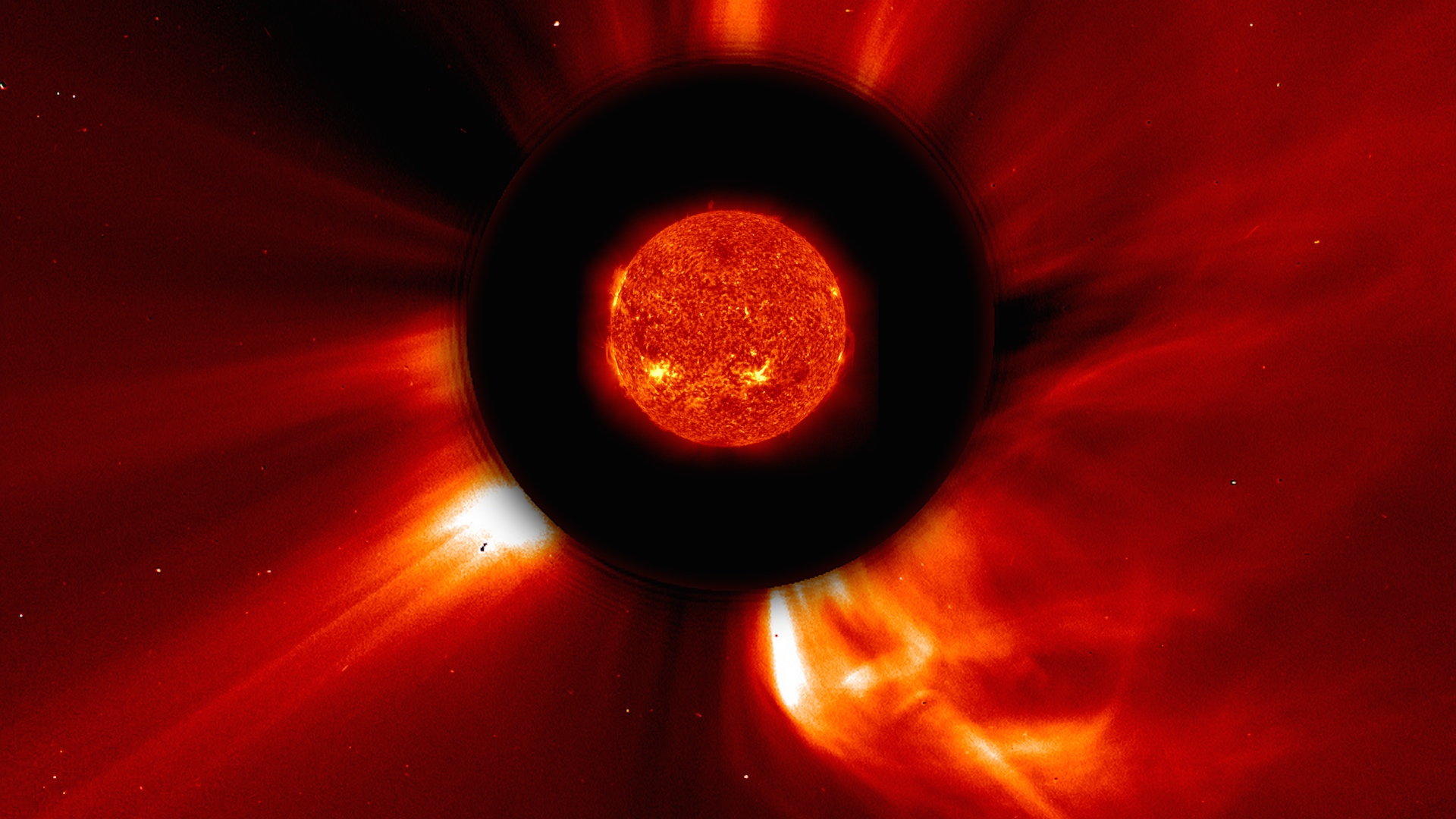As Seen by STEREO-B: The Carrington-Class CME of 2012
Like SDO, STEREO-B did not have a direct view of the coronal mass ejection (CME) launched by the sun on July 23, 2012. However, the active region involved was very close to the limb of the sun (lower left quadrant) and STEREO-B provided an excellent view of plasma launched in both ultraviolet light and the white-light coronagraph.
In this sequence from the STEREO-B, 304 angstrom ultraviolet filter, we see the CME rising from the lower left limb of the sun.
In this sequence from STEREO-B, we see more of the CME rising above the sun in the COR-2 imager.
In this sequence from the STEREO-B, 195 angstrom ultraviolet filter, we see the CME rising from the lower left limb of the sun.
For More Information
See Science@NASA
Credits
Please give credit for this item to:
NASA's Scientific Visualization Studio
-
Animator
- Tom Bridgman (Global Science and Technology, Inc.)
-
Producer
- Scott Wiessinger (USRA)
-
Scientist
- Joe Gurman (NASA/GSFC)
-
Project support
- Laurence Schuler (ADNET Systems, Inc.)
- Ian Jones (ADNET Systems, Inc.)
Series
This page can be found in the following series:Datasets used
-
EUVI (195 Angstroms) [STEREO-B: Extreme UltraViolet Imager]
ID: 832This dataset can be found at: https://stereo.gsfc.nasa.gov
See all pages that use this dataset -
EUVI (304 Angstroms) [STEREO-B: Extreme UltraViolet Imager]
ID: 833This dataset can be found at: https://stereo.gsfc.nasa.gov
See all pages that use this dataset -
COR2 [STEREO-B: Coronograph 2]
ID: 834This dataset can be found at: https://stereo.gsfc.nasa.gov
See all pages that use this dataset
Note: While we identify the data sets used on this page, we do not store any further details, nor the data sets themselves on our site.
Release date
This page was originally published on Wednesday, July 23, 2014.
This page was last updated on Sunday, January 5, 2025 at 10:31 PM EST.




